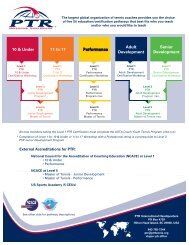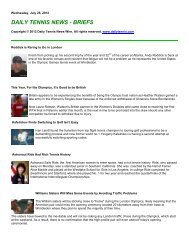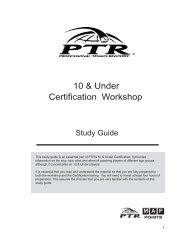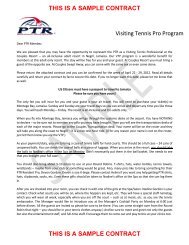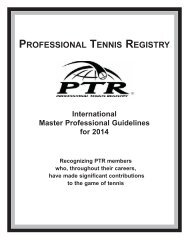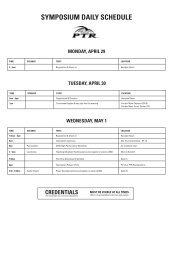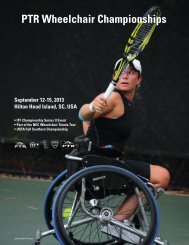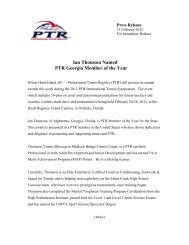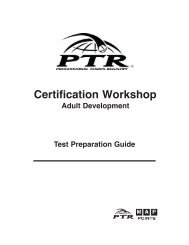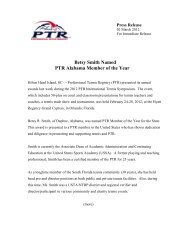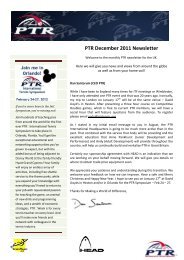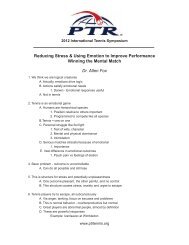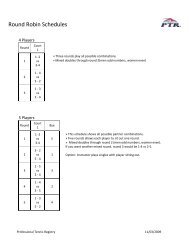SPORT SCIENCE - Professional Tennis Registry
SPORT SCIENCE - Professional Tennis Registry
SPORT SCIENCE - Professional Tennis Registry
You also want an ePaper? Increase the reach of your titles
YUMPU automatically turns print PDFs into web optimized ePapers that Google loves.
The Physical Demands of <strong>Tennis</strong>There are numerous studies examining the physical demands and characteristics of tennis. 1-6According to these studies, tennis points generally last 4 to 10 seconds, with 20 seconds restand 90 seconds between changeovers. A typical clay court rally lasts 6 to 8 seconds and ahard court rally lasts 4 to 6 seconds. Therefore, the work:rest ratio in tennis ranges typicallyfrom 1:2 to 1:5. A player might change directions 3 to 6 times during a typical rally. Movementis usually lateral along the baseline, and 80% of movement between strokes is 8 feet or less. 6Because of the stop and go nature of tennis, the sport is mostly anaerobic, but requires goodaerobic capabilities to help during recovery between points. During a typical singles match,the heart rate can reach 190 beats per minute and drop to 110 during changeovers. 5-8 A typicalplayer might burn 300 to 2,000 calories in a singles match, which could last anywhere from 45minutes to 3 hours, depending on the quality of rallies, skill level, age, gender and body weight.Assessing PlayersThere are three general ways to measure an athlete’s training or performance. First, a coachcan work with an athletic trainer, physical therapist and/or certified tennis performancespecialist, to screen physical weaknesses and strengths of individual athletes. Thatinformation is highly useful in determining how an athlete should train to help avoid injuriesand optimize performance. That same information may also help determine what loads andintensities the athlete can undertake. For example, a tennis player might have poor shoulderstability and therefore needs strengthening before attempting to develop a powerful serve.Second, a coach might also initially test tennis players for athleticism. For example, a coachmight have a leg strength test, a sprint test and an agility test. There are some well knowntests, including the Spider Drill (see Page 66). The results can help a coach determine howpractices might incorporate more movement drills. Testing might also help motivate a team totrain harder. A coach can announce a fitness testing day in which players can endeavor toexcel.Third, a coach might track progress of players and periodically test athletes during the seasonor from year to year. Young athletes, who are growing fast, might find such tests fun andmotivating. A director of junior tennis may find tracking highly motivational and useful indeveloping an overall junior program. There are many tests that give typical scores fordifferent ages.PTR Practical On Court Applications for Sport Science 7



